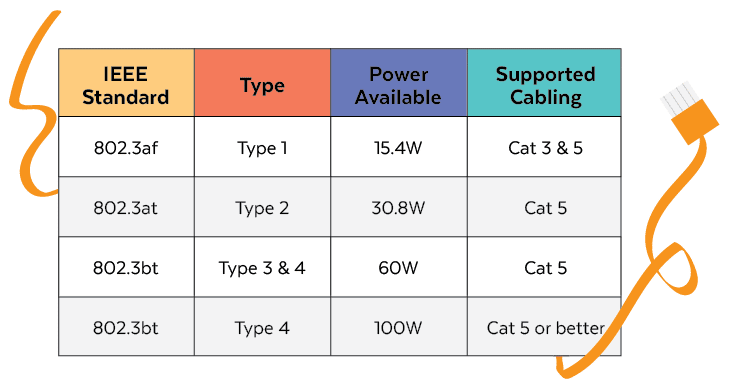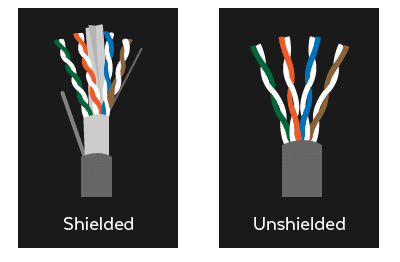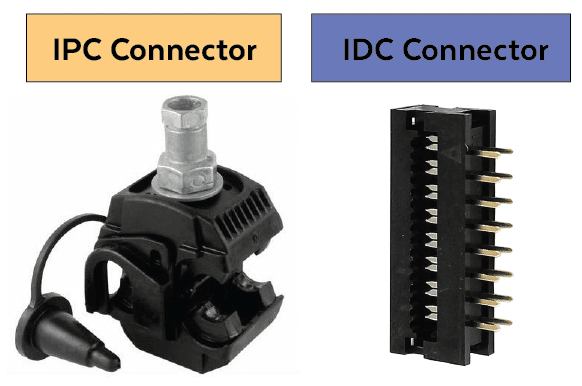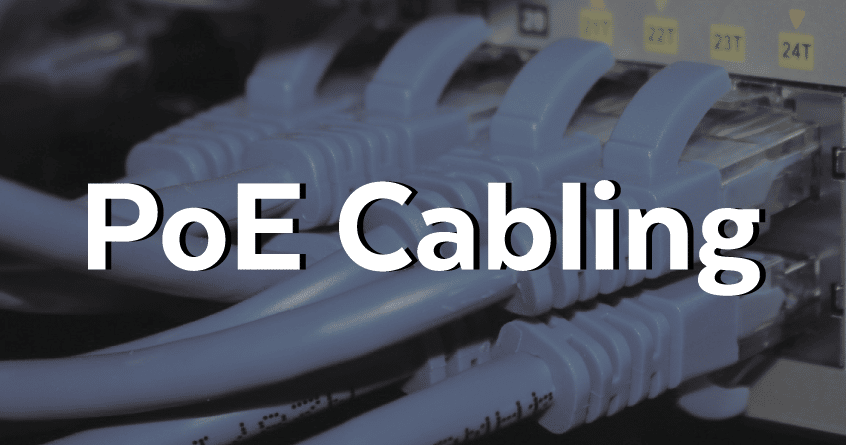Power over Ethernet (PoE) technology is booming. New PoE-capable devices for smart buildings are flooding the market at a remarkable rate. Now is the right time to pay attention to your cabling infrastructure and ensure you’re getting it right.
PoE technology has been around for decades, but it’s increasingly making waves in the business world as more companies adopt smart building technologies like wireless access points and IP phones.
PoE cabling will change how you think about running your business or enterprise. Now is the right time to start learning if you’re not already up-to-date on what it is, how it works, and why it’s important.
Here’s what you need to know about PoE cabling, from how it works and its standards to the things to consider when implementing it in your facility.
So, What Is PoE?
PoE (Power over Ethernet) is a technology that allows power and data to go through the same cable. It allows you to send information and electricity over the same network cable.
In other words, PoE allows the same cable to power network devices like routers, switches, IP cameras, and VoIP phones as the one that carries data between them.
What Are the PoE Standards?
PoE standards are the rules that govern how to use PoE. They specify the voltage, current, or wattage a PoE switch or injector can supply to a powered device.
Here’s a table for more information on that.

As you can see, not every product will support all standards, so it’s important to check before buying anything to make sure it will work with your setup.
Proper PoE Cabling Is Crucial
PoE cabling is a critical part of any business’ network infrastructure. It’s also one of the most overlooked aspects of any network, but it shouldn’t be.
The point is that proper PoE cabling is crucial. It’s the difference between a network that works and one that doesn’t. It’s also a key factor in whether or not your company can leverage the technology to its fullest potential.
And despite this, some businesses still don’t put enough thought into choosing their PoE cabling. Luckily for you, we’ve put together some tips so you can ensure you’re getting the most out of your network.
Things to Consider When Choosing PoE Cabling
PoE cabling is an essential part of any business. It is the conduit for power, data, and voice-over IP (VoIP) communications to flow throughout your enterprise.
PoE cabling can be used in various ways, from powering devices such as IP phones and wireless access points (WAPs) to transmitting data across large distances.
Here are some things to consider when choosing your PoE cabling:
1. Conductor Size
This refers to the thickness of the wire used in the cable. It determines how much power a cable can deliver. The larger the conductor size, the more power can be delivered at once, or the more current it can carry without overheating or breaking down under stress.
2. Cable Structure 
Cable structure deals with how many pairs bundle together in each cable. The more pairs bundled together, the higher the bandwidth and speed you can achieve over that connection.
There are two main types of cable structure: an unshielded twisted pair (UTP) and a shielded twisted pair (STP). UTP has four pairs, while STP has two pairs plus an additional shield around them.
3. Cable Temperature
Temperature affects how quickly your cables will heat up and how resistant they are to heat damage over time. Colder temperatures mean slower degradation over time, while hotter temperatures mean faster degradation. Cables usually have temperature ratings of 60°C, 75°C, and 90°C.
4. PoE Cabling Materials
The type of cable material used will depend on your needs and budget. The material used in the cable can affect its performance. For instance, some cables are made from copper, while others are made from fiber optics. Both have pros and cons; copper is generally cheaper and easier to install, but fiber optics is faster and more secure.
Copper cables will work well if you need fast data transmission speeds on short distances. But if you need longer distances or more bandwidth for high-bandwidth applications like video streaming or large file transfers, fiber optic cabling will suit your needs better.
5. Power Consumption
This refers to how much electricity your network devices use when they’re turned on, and this number can vary widely, depending on what kind of device you’re using and how many devices there are overall.
Some devices have higher power requirements than others, so choose a cable that can handle them appropriately.
6. Data Transmission Requirements
Always check with your IT department before making any changes to your network infrastructure. They can tell you exactly what kind of data transmission speed and throughput you need for the work being done within each office space.
The more people working on a project at once, the higher these requirements are likely to be. For example, if you want faster data transfer speeds, you should use category 5e (CAT5e), category 6A or 7 cables.
7. Installation Configuration
Installation configuration is another important consideration when choosing PoE cabling. Different installations require different types of cables, so make sure you choose the type that suits your installation best.
For example, if you want to install network cabling in an office building, it would be wise to use plenum-rated cables because they can withstand high temperatures during operation.
8. IPC or IDC PoE Cabling
You’ll also want to keep in mind that there are two types of connectors: IPC (insulation-piercing connector) and IDC (insulation-displacement connector). These two types of connectors differ in how they interact and the wires inside them.
IPC, frequently used in patch cords, may become unstable over time. The connection may loosen as the material ages and also due to cable movements. The greater the contact resistance between the contacting plate and stranded wire, the higher heat development in them and the risk of their destruction.
IDC, on the other hand, ensures that the contact quality of a product remains consistent throughout its lifetime. A fork-shaped spring clamp holds the stranded wire in place. This makes a permanent connection that can withstand tension, vibration, dust, water, and corrosion.
While both can be used with PoE applications, IPC connectors are more commonly used in residential installations, while IDC connectors are more commonly used in commercial ones.
Wrapping Up
PoE cabling can help you to make your network more efficient and secure. However, you must choose the right PoE cabling for your needs. That’s why Versa Technology, an industry leader in PoE networking equipment, specializes in PoE networking devices to help you find the right solution for your business needs.
Our experts can help you choose the right PoE cabling for your business and provide expert advice on how to set up a PoE network that works for you. For more information about PoE devices and how we can help you with your networking needs, visit our website or contact us today.

